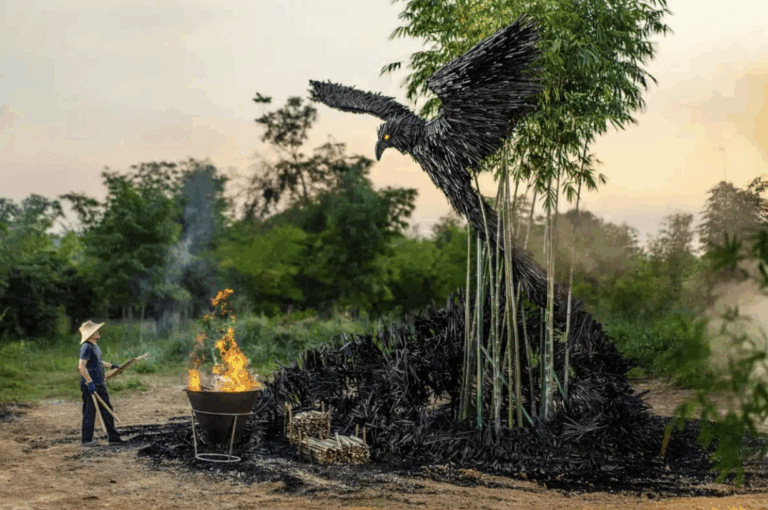Discover how contemporary art is driving sustainability by transforming environmental issues into powerful visual experiences that inspire community action and ecological awareness.

From underwater sculptures to solar-powered gardens, The Art of Sustainability reveals how artists worldwide are merging creativity and innovation to promote environmental change.
Contemporary art translates abstract environmental issues—such as biodiversity loss, water pollution, and climate change—into immersive visual experiences that resonate with a broad audience. Installations often use reclaimed or innovative materials, making both the artwork’s theme and its substance an embodiment of sustainability. Many projects are created in partnership with scientists, environmental organizations, or directly engage local communities, thus amplifying their impact.

Alluvia global underwater artist, Jason deCaires Taylor, is an LED-lit underwater sculpture of a sleeping woman. Crafted from recycled glass and marine steel, the sculpture lies submerged in the River Stour in the United Kingdom. The artwork not only integrates environmental monitoring sensors that track river health, but it also honors art history through visual references to Millais’s “Ophelia”. As the artist explains, “The figure’s posture responds to the river’s flow, reflecting both its ceaseless movement and the invisible barrier of water—like being trapped behind a window.” Serving as both a scientific tool and a public attraction, Alluvia encourages visitors to reflect on water ecosystems and the changing interface of art, ecology, and memory.

Alluvia global underwater artist, Jason deCaires Taylor, is an LED-lit underwater sculpture of a sleeping woman. Crafted from recycled glass and marine steel, the sculpture lies submerged in the River Stour in the United Kingdom. The artwork not only integrates environmental monitoring sensors that track river health, but it also honors art history through visual references to Millais’s “Ophelia”. As the artist explains, “The figure’s posture responds to the river’s flow, reflecting both its ceaseless movement and the invisible barrier of water—like being trapped behind a window.” Serving as both a scientific tool and a public attraction, Alluvia encourages visitors to reflect on water ecosystems and the changing interface of art, ecology, and memory.

Towering at 20 feet and constructed entirely from biochar, Carbon Phoenix is a sculpture made by Benjamin Von Wong, an artist well known for works highlighting global environmental concerns. In mythology, the phoenix was a bird from the Arabian desert that after living for five or six centuries burned itself upon a funeral pyre only to rise from the ashes with renewed youth to live again. Van Wong’s surging phoenix, situated in Ratchaburi, Thailand, visually evokes the look and feel of the phoenix using charred bamboo that represents an individual’s annual carbon footprint. The project’s collaboration with bamboo farmers and use of carbon capture not only demonstrates hands-on solutions, but also inspires visitors to consider the tangible potential of environmental innovation.
As art evolves, we expect to see artists continue to incorporate sustainability in art. Experts point to a number of trends including:
While it’s far too early to say, if and when, any of these new art trends will find their way into the auctions at Christie’s or Sotheby’s, contemporary art remains a dynamic bridge. Just as artists fuse creativity with sustainability, J&J Green Paper channels innovation into practical solutions, proving that imagination and responsibility together can transform industries—and, like art, connect creativity, environmental awareness, and transformative action with the wider public.